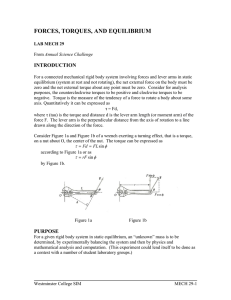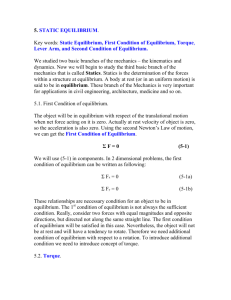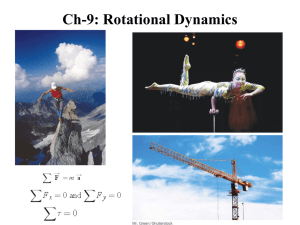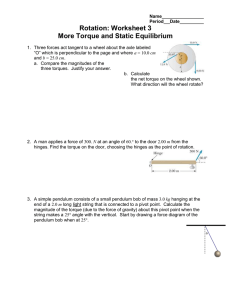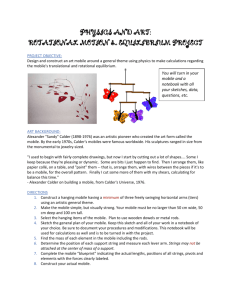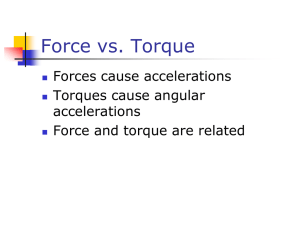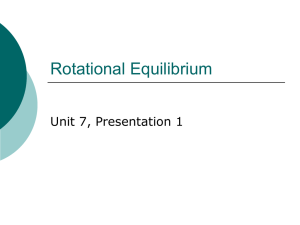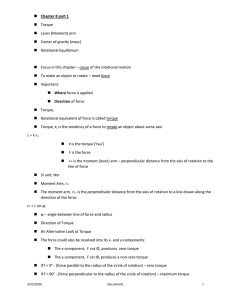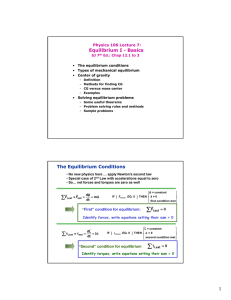Conditions of Static (Mechanical) Equilibrium
advertisement
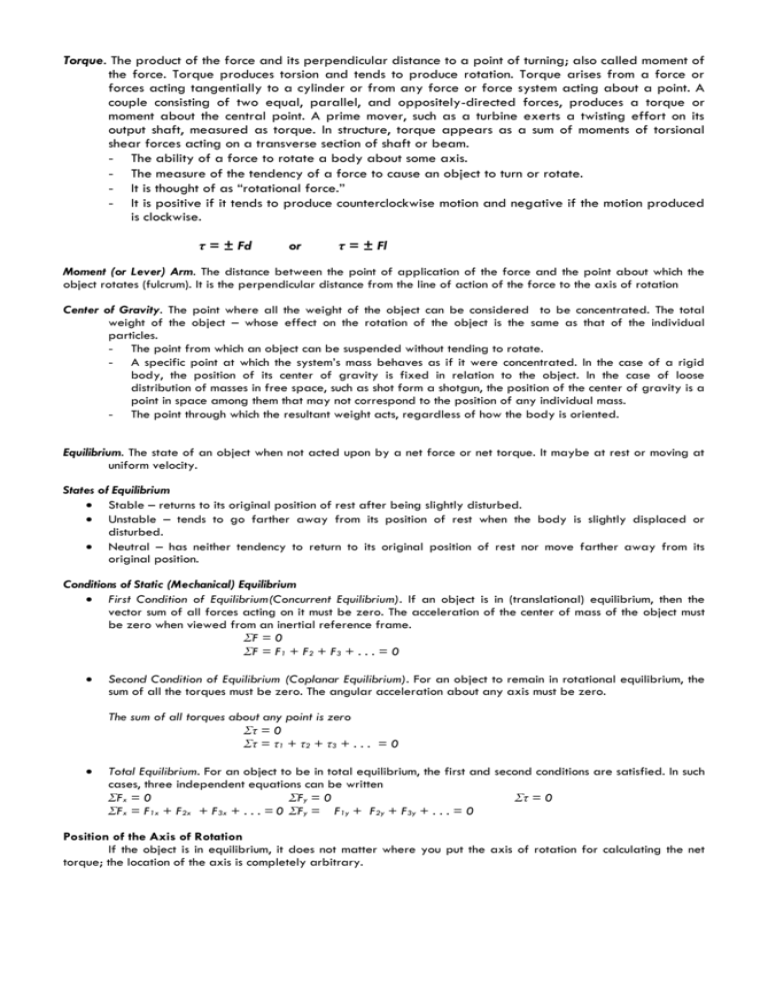
Torque. The product of the force and its perpendicular distance to a point of turning; also called moment of the force. Torque produces torsion and tends to produce rotation. Torque arises from a force or forces acting tangentially to a cylinder or from any force or force system acting about a point. A couple consisting of two equal, parallel, and oppositely-directed forces, produces a torque or moment about the central point. A prime mover, such as a turbine exerts a twisting effort on its output shaft, measured as torque. In structure, torque appears as a sum of moments of torsional shear forces acting on a transverse section of shaft or beam. - The ability of a force to rotate a body about some axis. - The measure of the tendency of a force to cause an object to turn or rotate. - It is thought of as “rotational force.” - It is positive if it tends to produce counterclockwise motion and negative if the motion produced is clockwise. τ = ± Fd or τ = ± Fl Moment (or Lever) Arm. The distance between the point of application of the force and the point about which the object rotates (fulcrum). It is the perpendicular distance from the line of action of the force to the axis of rotation Center of Gravity. The point where all the weight of the object can be considered to be concentrated. The total weight of the object – whose effect on the rotation of the object is the same as that of the individual particles. - The point from which an object can be suspended without tending to rotate. - A specific point at which the system’s mass behaves as if it were concentrated. In the case of a rigid body, the position of its center of gravity is fixed in relation to the object. In the case of loose distribution of masses in free space, such as shot form a shotgun, the position of the center of gravity is a point in space among them that may not correspond to the position of any individual mass. - The point through which the resultant weight acts, regardless of how the body is oriented. Equilibrium. The state of an object when not acted upon by a net force or net torque. It maybe at rest or moving at uniform velocity. States of Equilibrium Stable – returns to its original position of rest after being slightly disturbed. Unstable – tends to go farther away from its position of rest when the body is slightly displaced or disturbed. Neutral – has neither tendency to return to its original position of rest nor move farther away from its original position. Conditions of Static (Mechanical) Equilibrium First Condition of Equilibrium(Concurrent Equilibrium). If an object is in (translational) equilibrium, then the vector sum of all forces acting on it must be zero. The acceleration of the center of mass of the object must be zero when viewed from an inertial reference frame. ΣF = 0 ΣF = F1 + F2 + F3 + . . . = 0 Second Condition of Equilibrium (Coplanar Equilibrium). For an object to remain in rotational equilibrium, the sum of all the torques must be zero. The angular acceleration about any axis must be zero. The sum of all torques about any point is zero Στ = 0 Στ = τ1 + τ2 + τ3 + . . . = 0 Total Equilibrium. For an object to be in total equilibrium, the first and second conditions are satisfied. In such cases, three independent equations can be written ΣFx = 0 ΣFy = 0 Στ = 0 ΣFx = F1x + F2x + F3x + . . . = 0 ΣFy = F1y + F2y + F3y + . . . = 0 Position of the Axis of Rotation If the object is in equilibrium, it does not matter where you put the axis of rotation for calculating the net torque; the location of the axis is completely arbitrary.


